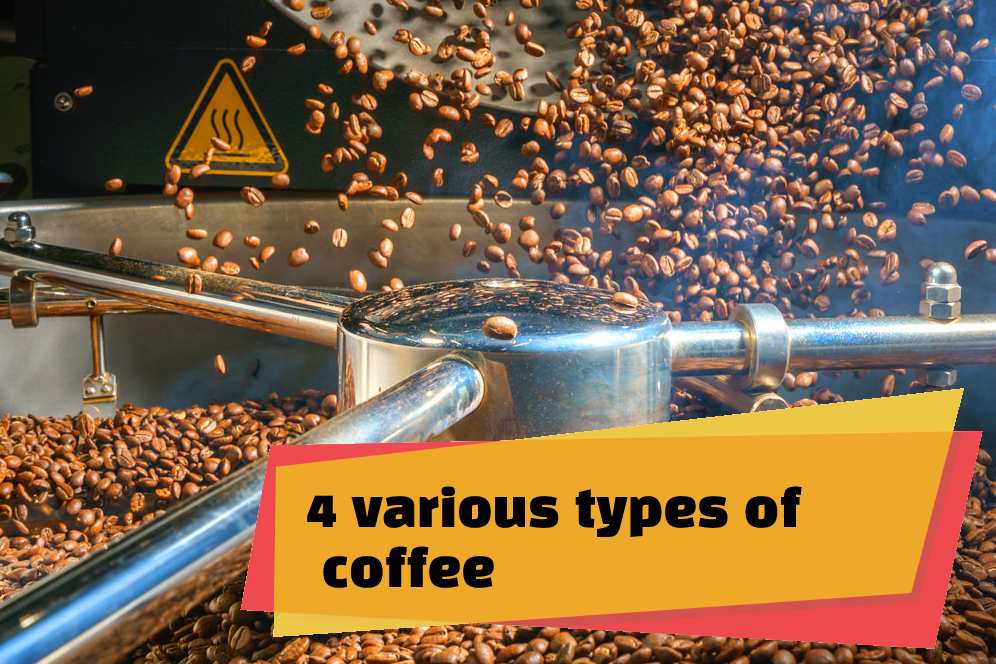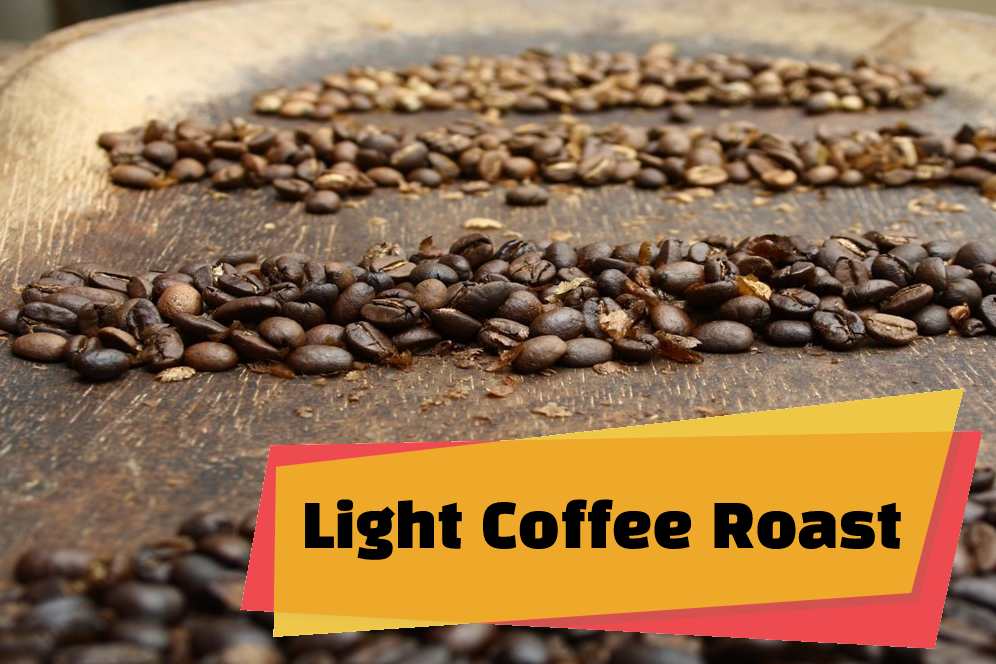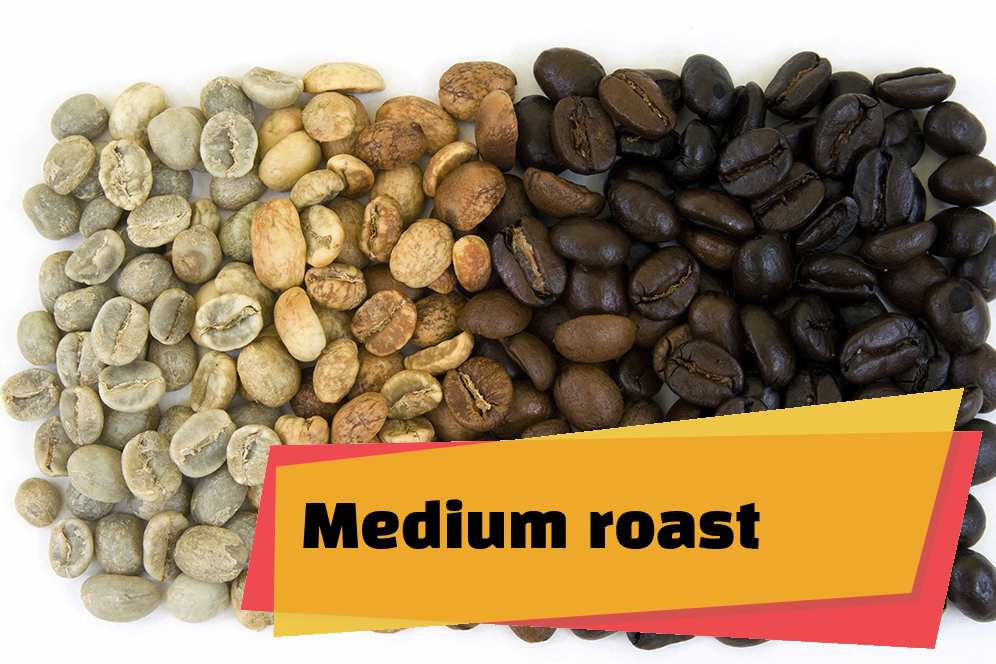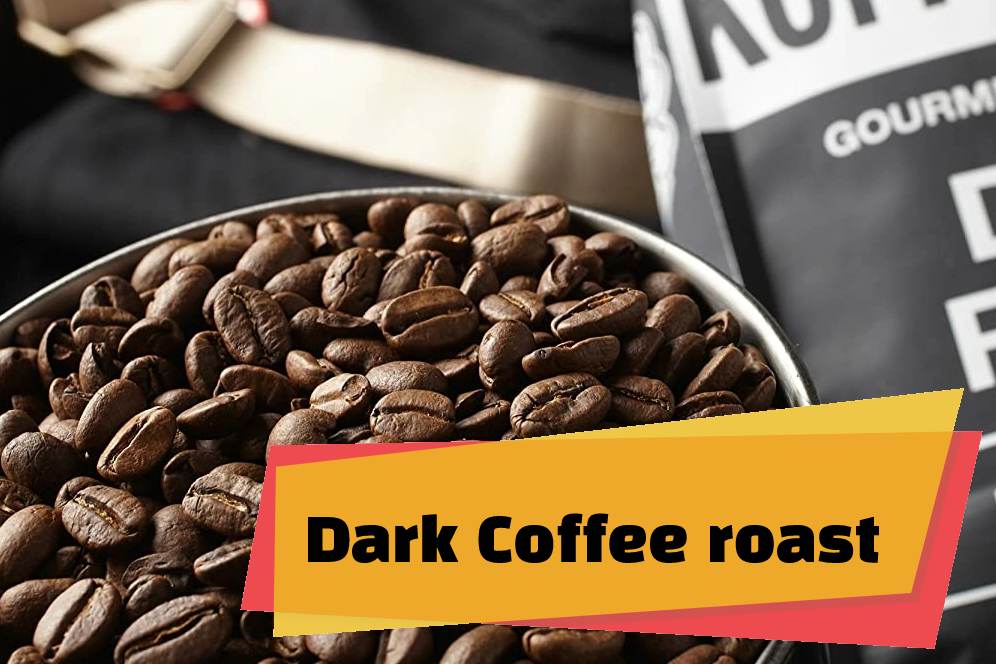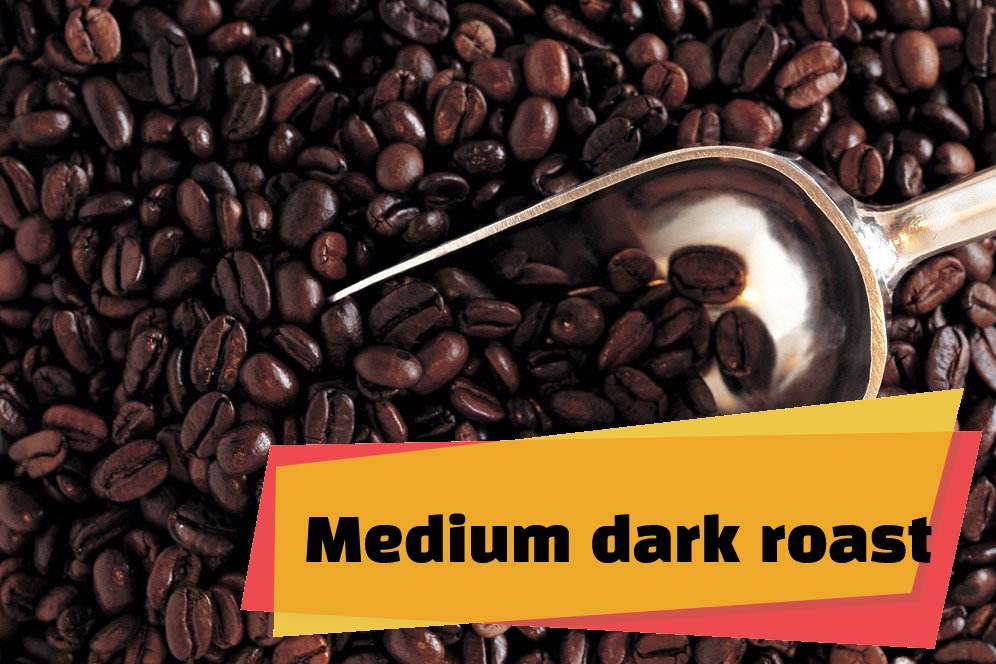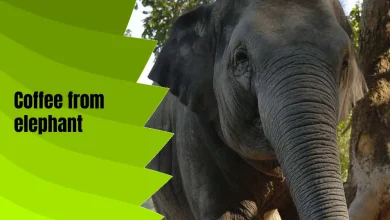Choosing the Coffee Roast That’s Best for You

Have you ever passed through the coffee shops, and the smell of these black beans overwhelmed you? I’m sure you had.
The scents of these beans are from heaven, but you know that coffee is not like fruits, for example, apple, which you can pick from a tree and start eating.
This article is just for you if you are a coffee lover interested in the different types of coffee roasts.
Also, the bean is vital in the coffee taste, but how we roast it extracts the flavor out of the coffee bean and makes it better. There are wide varieties of coffee beans and many types of roasts.
The roasting process can affect and change many things in a bean; it affects the body, acidity, and flavor of coffee beans. If you do not know about acidity, I recommend you to read the article on coffee acidity.
Contents
- 1 What is Roasting or What Happens During Roasting?
- 2 What is important when smelling coffee?
- 3 + 4 various types of coffee
- 4 Physical Changes During Coffee Roasting
- 5 Chemical Changes During Coffee Roasting
- 6 The History of Coffee Roasting
- 7 How much should coffee be roasted?
- 8 What are the Reasons for roasting coffee beans?
- 9 A complete Guide to roasting coffee at home
- 10 Which roast coffee is better?
- 11 Which roast coffee is healthier?
What is Roasting or What Happens During Roasting?
Complex chemical reactions transform pale green beans into people’s favorite, the most aromatic drink – coffee. There are two methods for achieving this:
- Air Roasting or Industrial Roasting: In this method, green coffee beans are roasted at a temperature of up to 600 degrees Celsius for just a few minutes. This means the roasting machine can process large quantities in a short time. Drawback: The high temperature can generate roasted aromas. The beans are usually raw inside and almost burnt on the outside. It not only has a bad taste but is also very unfriendly to the stomach.
- Drum Roasting Process: With the drum roasting process, much smaller amounts of green coffee are roasted at temperatures up to 245 degrees Celsius. Thanks to the relatively low temperature and longer roasting time – about 12 to 20 minutes – coffee is slowly refined. Flavors can develop better. In addition, bitter compounds and chlorogenic acids are broken down. This makes the coffee more aromatic and easier on the stomach.
What is important when smelling coffee?
An experienced roaster pays attention not only to the quality of raw beans but also ensures the accuracy of the roasting time and temperature. Both factors are essentially responsible for the coffee’s personality in the end.
The general rule is this: the longer the roasting process at the lowest possible temperature, the more aromatic the coffee will be.
We have four central coffee roasts, which are mentioned in the following section:
+ 4 various types of coffee
At the beginning of the task, it is best to begin our work with a quick definition. In general, coffee is a drink prepared by combining hot or boiling water with coffee beans that have previously been roasted and ground.
Coffee beans are produced by coffee plants, which are part of the coffee genus in the plant kingdom. Plants have fruit that contains beans; these fruits are known as cherries.
Before the cherry can be picked, it takes approximately a year for them to develop and grow into its ripe state fully.
To thrive, coffee plants need moderate temperatures, enough shade, and an abundance of rainfall.
Now that you know this famous plant, it is time to learn its roast coffee types.
In general, four distinct varieties of coffee are readily available to consumers. These are as follows:
- Light roast
- Medium roast
- Dark roast
- Medium dark roast
In the following section, we explain all of them, and you will know their differences:
Light Coffee Roast
One of the coffee roasts that are so popular among coffee lovers is Light Coffee Roast. The color of the light roast is Light brown, and it doesn’t have oil on its surface. The reason is in this type of roast, the beans have been roasted for the least amount of time.
These beans haven’t been roasted at a high temperature, so their Flavor is Toasted grain with pronounced acidity.
The heat pulls out its caffeine and acidity if a bean is roasted longer. This means your coffee bean in light roasts has the most caffeine and sharpness at the same time. So the Amount of Caffeine on this type of roast is High.
Because of the length of the roasting process, which is shortened, there is a fewer chemical change in the coffee bean, so the bean taste more original, and the flavors come from the roasting process aren’t prominent that much.
Also, Light Roasts beans have a sour flavored finish on your thong, which is pleasing for many coffee lovers. This kind of bean is very suitable for making Cold Brew.
Medium roast
As its name might represent, medium coffee roasts have balanced flavors. Coffee drinkers in the US mostly use this type of roast.
The color of these kinds of beans is Dark Brown, and they have Some Oil on the Surface. The amount of caffeine is low on the medium roast.
Brew these beans using the Moka pot, automatic drip, or espresso methods, and enjoy having nutty and chocolaty flavor notes.
Dark Coffee roast
The color of these beans is darker than others, called a dark Coffee roast. These are dark brown or even black because of the long roast process.
The bitter and spicy taste is because of the roasting process. This type of roast is primarily popular in Europe.
Starbucks coffee is made of dark Coffee roast. The oil has mainly been brought out because of a long roasting process. Espresso lovers are familiar with this type of roast more than other types.
Medium dark roast
Medium dark roast beans are darker than medium roast and light roast in color because they are roasted longer.
You will get a bold body and rich flavor with a bittersweet aftertaste from this type of roasted beans.
You can distinguish the flavors of dark chocolate and dark roasted almonds, which is pleasing for many coffee lovers.
Ok! You’ve seen that we provide four primary types of coffee roasts up until now, and now you’ll learn more about each of those varieties.
Physical Changes During Coffee Roasting
In contrast to chemical changes, the physical changes in coffee beans during roasting are easily noticeable. During roasting, the beans undergo alterations in color, volume, shape, and weight. The color of the beans changes from a slightly greenish hue to yellow, yellow-brown, and ultimately light brown in lighter roasts, and even to dark brown in very dark roasts. Through water evaporation and the formation of CO2, the volume of the beans doubles. As water is lost and released through decomposition processes, the beans also decrease in weight.
Chemical Changes During Coffee Roasting
Smelling ensures that the distinctive aromas, flavors, and scents of coffee are formed. These are achieved through numerous primary and secondary chemical reactions that are highly complex and have not yet been fully researched. Green coffee itself contains a multitude of compounds that are transformed into over 1000 aromatic compounds through chemical reactions, with only some of them being known.
The most significant chemical process is the Maillard reaction, which is a non-enzymatic browning reaction in coffee. Amino acids, as well as proteins and peptides, react with reducing sugars in green coffee through temperature effects to form new compounds. The Maillard reaction involves a multi-stage reaction that creates colors and flavors. In addition to this reaction, other chemical reactions such as hydrolysis, caramelization, oxidation, pyrolysis, and decarboxylation occur during the roasting process. These processes impart a wide range of flavor characteristics to coffee, enriching it with notes of body, sweetness, chocolatey, and nutty richness.
The History of Coffee Roasting
In the beginning, when coffee found its way into private homes, it was roasted separately at home. There were special roasting pans with lids and hand-cranked mills that were used for roasting coffee on stoves.
The first roasting machines in the 16th and 17th centuries were iron drums that were rotated over a flame using a hand crank. This technology was only replaced by cast iron roasting machines in the 19th century. These roasting machines could better meet the growing demand for roasted coffee compared to hand-cranked mills.
The drum roasting machine that emerged since then has been the origin of traditional coffee roasting. This type of roasting machine allows for batch roasting, meaning roasting is done in portions. In addition to drum roasting, centrifugal roasting is also included in the roasting process.
How much should coffee be roasted?
What matters here is what the coffee should ultimately express: Light roasts, often referred to as ‘blonde roasts’ or ‘city roasts plus,’ only exhibit slight bitterness but feature very prominent fruity notes. Conversely, dark roasts at the upper end of the roasting scale are known for their bitterness.
What’s crucial is the roasting process used to refine the beans. With drum-roasted coffee, the roaster can take time to create aromas: the roasting time is 15 to 20 minutes at a low temperature. The coffee cools slowly in the air.
The hot air process is used in the industry. Here, beans are intensely heated for a very short period (2 to 5 minutes) and then rapidly cooled at the same speed. The hot air process is more cost-effective as it can roast significant quantities of coffee.
On the other hand, we focus on the finer points and want to elaborate more on the following categories:
What are the Reasons for roasting coffee beans?
Technically, the coffee beans are tasteless when they are raw. They have to grow through roasting to become useful, and we can use them to make the coffee we love and drink daily.
So, these beans cannot become coffee if they are not roasted.
As mentioned above, you need to roast coffee beans to bring out the aroma and flavor locked inside the green coffee beans.
The brown beans you know as coffee beans have undergone a lot of processes to become functional.
A complete Guide to roasting coffee at home
If you want to create your suitable coffee taste and roast coffee at your home, you can read this section to have a general idea about what you will do.
We have four methods to roast coffee at home. We will examine them to help you roast these small beans and make a delicious cup of coffee from the first process at home.
first, you have to choose the method to roast green coffee beans at home:
- Roast in a pan
- Roast in an oven
- Roast in a popcorn popper
- Roast in a home coffee roaster
Our recommendation to roast coffee beans in small quantities at home for beginners is using a popcorn popper or buying a home coffee roaster.
You can purchase a coffee roaster to become even more professional in making your coffee home.
After you roast coffee, you need to store them and let them rest and remember, do NOT use the roasted coffee beans immediately.
It would be best if you gave it time, at least 3 or 4 days; after that, they are ready to become a nice hot cup of drink.
Which roast coffee is better?
The dark-roasted coffees are better for you if you want a more robust flavor. Lightly roasted coffee beans have brighter taste notes than dark roasted coffee.
If you want more caffeine, lightly roasted coffee is a good choice, but dark roasted coffees are healthier and good for the human body.
Which roast coffee is healthier?
As you’ve read throughout the text, several types of roasted coffee are produced under various circumstances.
Each of these coffees has a unique combination of benefits and drawbacks, and consumers choose among them based on their preferences.
But if we want to share with you the options that are the most beneficial to your health and our study, as well as the experiences of other coffee drinkers, we have to tell you the following:
Dark roast coffee is better for health and body weight and is more effective than light roast coffee.
To bring things to a close
This article explains all four types of coffee roasts: Light roast, medium roast, Medium dark roast, and Dark roast.
We also discussed the reasons for roasting coffee beans and their different tastes and flavors.
Also, if you want to roast your coffee beans at home, you have four options. If you have roasted the coffee beans at home, please tell us which method you used.
If you have questions or inquiries about coffee roasting or types of coffee roasts, you can ask in the section below. We will answer ASAP.
Can I use any roast in my fully automatic coffee machines?
In general, you can use any roast in fully automatic coffee machines from most companies, except for Spanish roast, which can cause the grinder to stick. The right choice of roast largely depends on your personal preference and the brewing method you select.
